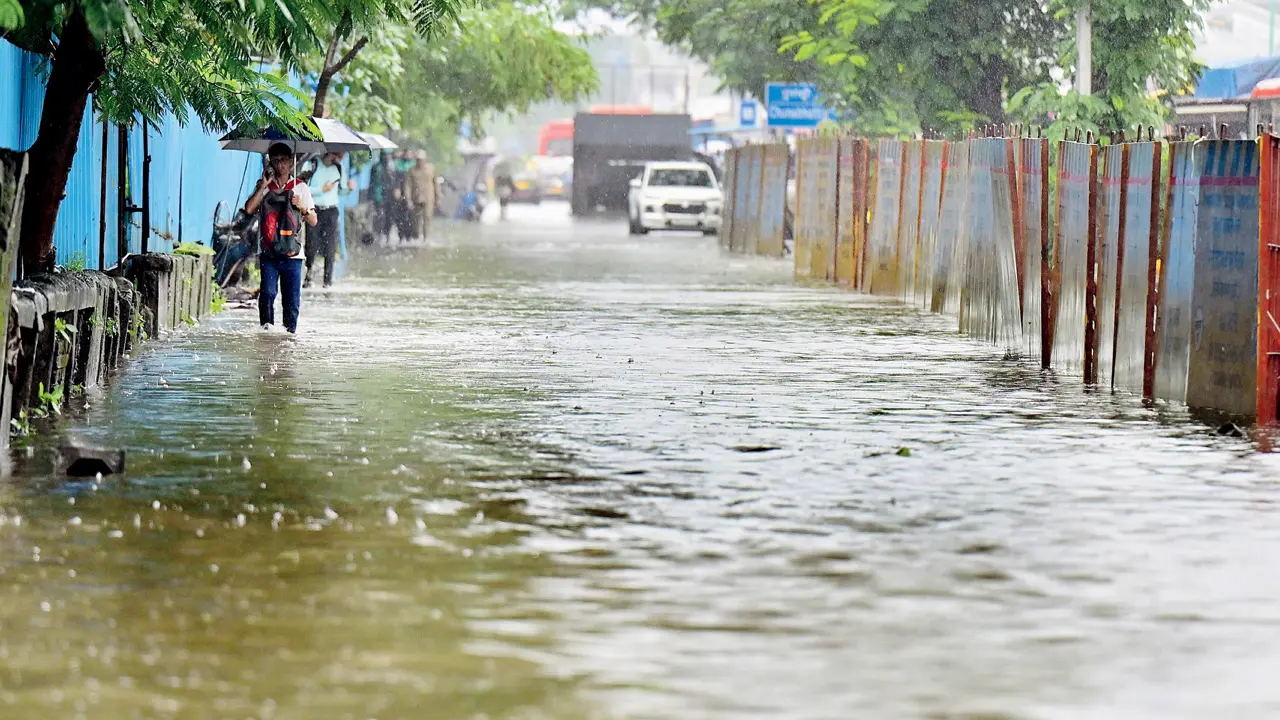August 19, 2025: Mumbai’s long-standing flooding hotspots at Hindmata in Dadar East and Gandhi Market in Sion were once again left submerged on Monday as relentless rainfall battered the city. Water levels rose to nearly 1.5 feet at both locations, causing significant disruption along Babasaheb Ambedkar Road, one of the city’s busiest arterial routes linking the eastern suburbs with the island city.
To tackle the recurring problem, the Brihanmumbai Municipal Corporation (BMC) had, in 2021, constructed large underground water-holding tanks at these vulnerable sites. The Hindmata facility, conceptualised in 2018, can hold up to 30 lakh litres of rainwater. Despite these measures, flooding persisted, raising questions over the effectiveness of the system.
On Monday, Hindmata reported waterlogging from 9.30 am until 1.45 pm, forcing the Mumbai Traffic Police to close a stretch of Babasaheb Ambedkar Road. Vehicles were diverted via the Parel TT flyover, leading to long traffic snarls in the area. Gandhi Market, similarly, witnessed heavy waterlogging between noon and 2 pm, paralysing traffic on adjoining stretches.
According to the BMC’s Disaster Management Control Room, 11 dewatering pumps were pressed into service around the Hindmata catchment zone, including six located at Hindmata junction itself, all operating at full capacity. In Gandhi Market, six additional pumps were deployed to drain floodwaters.
Officials maintained that the intensity of Monday’s showers overwhelmed the system despite the preparedness measures. However, commuters expressed frustration, pointing out that the same problem recurs each monsoon, even after significant investment in flood-mitigation infrastructure.
As Mumbai braces for more rain this week, civic authorities are expected to review the functioning of the storage tanks and pumping system. Urban planners have repeatedly stressed the need for long-term drainage upgrades to prevent waterlogging in low-lying neighbourhoods such as Hindmata and Sion.
Source: Mid- day





